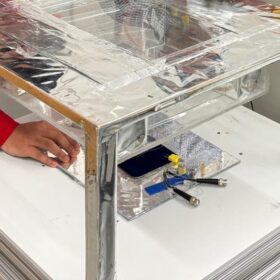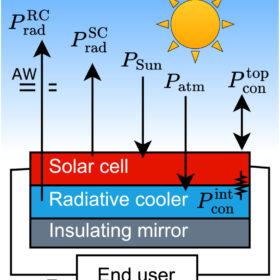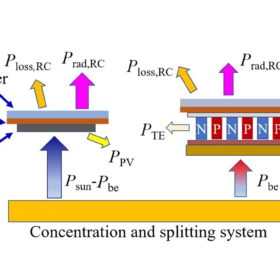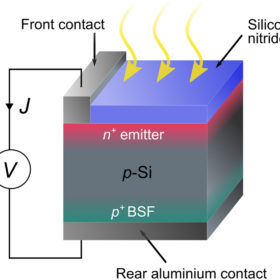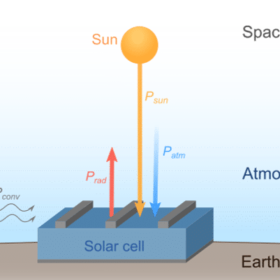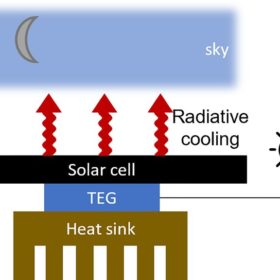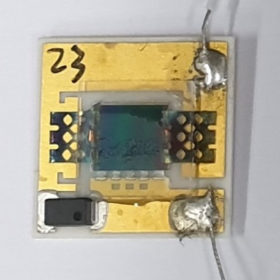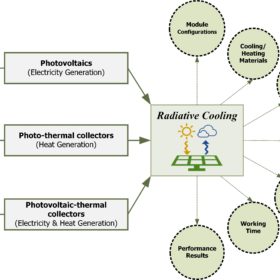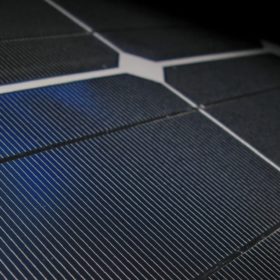U.S. scientists build hybrid energy system integrating PV, radiative cooling
The hybrid system has a cooling power of 63.8 W/m2 and a photovoltaic power output of 159.9 W/m2. According to its creators, the cooling capacity provided by the system can be used in buildings or refrigerators.
Radiative cooling tech for vertical solar panels
Developed by a US-Saudi research group, the novel technique employs two 45-degree inclined mirrors on the two sides of a PV module. On the back side, a spectral selective reflector enables the thermal radiation to be directed to the sky while preventing the back of a module from heating up by the scattered sunlight.
New research shows potential of solar cells based on cement radiative coolers
Researchers in Italy have proposed the use of radiative coolers made of cementitious materials to reduce the operating temperature of solar panels. They incorporated Auger (AUG) and Shockley–Read–Hall (SRH) nonradiative recombination into their modeling and described the practical realization of the coolers as “attractive.”
Photovoltaic-thermoelectric tech with potential efficiency of 65%
Chinese scientists have simulated a new photovoltaic-thermoelectric technology, based on radiative cooling and III-V solar cells, to generate electricity at night.
Opto-electro-thermal model to predict solar cell temperature, output
French scientists have developed a fully coupled opto-electro-thermal model that reportedly predicts solar cell behavior under real operating conditions in a standalone framework. They said the model can detect the impact of cell doping on the operating temperature and the temperature coefficient.
Radiative cooling for PV modules – challenges and prospects
A group of international scientists has investigated the potential use of radiative cooling in PV systems, in a newly published review focusing on challenges and opportunities for the passive cooling technology.
Radiative cooling-based solar cell with 50 mW/m2 of generation at night
Stanford University scientists have developed a solar cell with 24 hours of power generation via an embedded thermoelectric generator, which extracts power from the radiative cooler at night. Extra daytime power from excess heating comes from the cell itself.
Multi-junction solar cell integrating radiative cooler
The triple-junction solar cell is based on indium gallium phosphide (InGaP), gallium arsenide (GaAs), and Germanium (Ge) and is made with a micro-grating made of glass, consisting of a two-dimensional x-framework structure fixed onto the surface of the solar cell. Its operating temperature was found to be 6 degrees Celsius lower than that of a reference cell without the cooling technique.
The best radiative cooling tech for PV arrays
Scientists in China have analyzed the radiative cooling techniques used in combination with solar energy systems such as PV arrays, solar thermal collectors, and concentrated PV installations. They identified five major system typologies based on functionality and working time.
Water harvesting tech for PV panel cleaning and cooling
An international research team has proposed to use nighttime radiative cooling to harvest water from PV panels and reuse it for module cleaning during the daytime. According to their findings, the proposed system has, also, a beneficial effect on the modules’ operating temperature.
